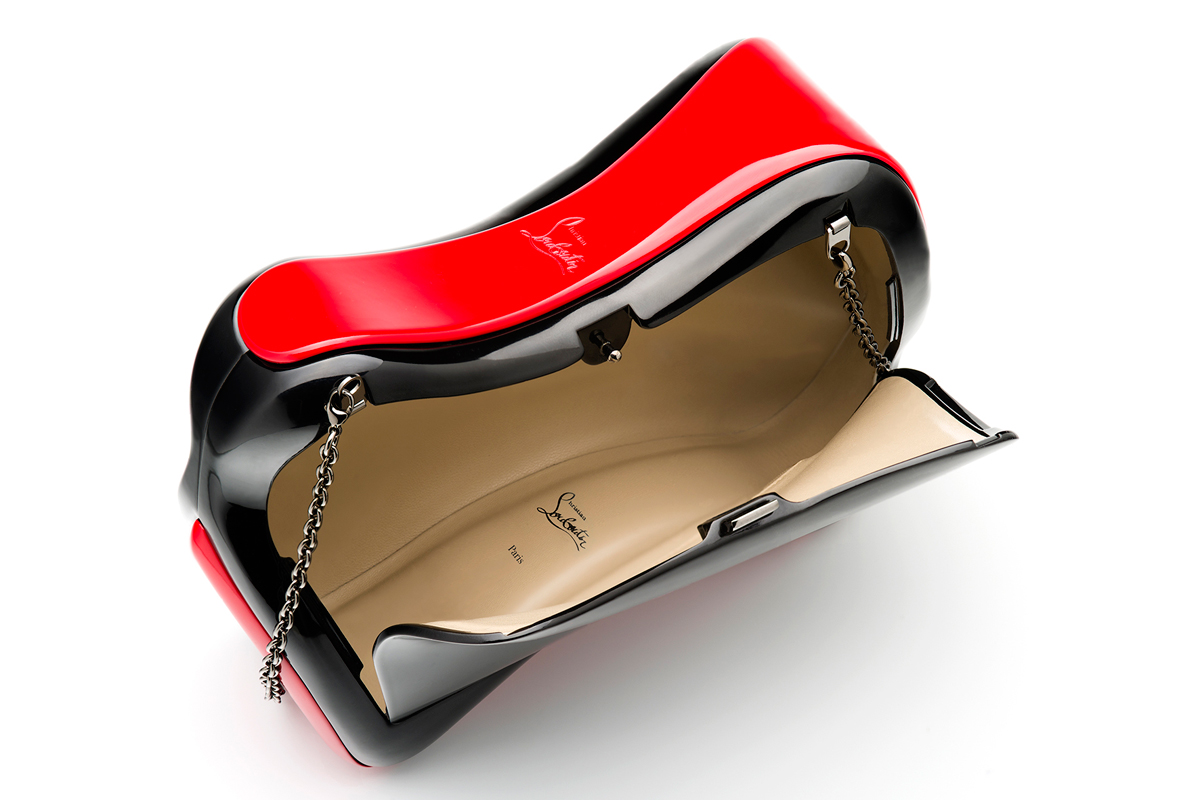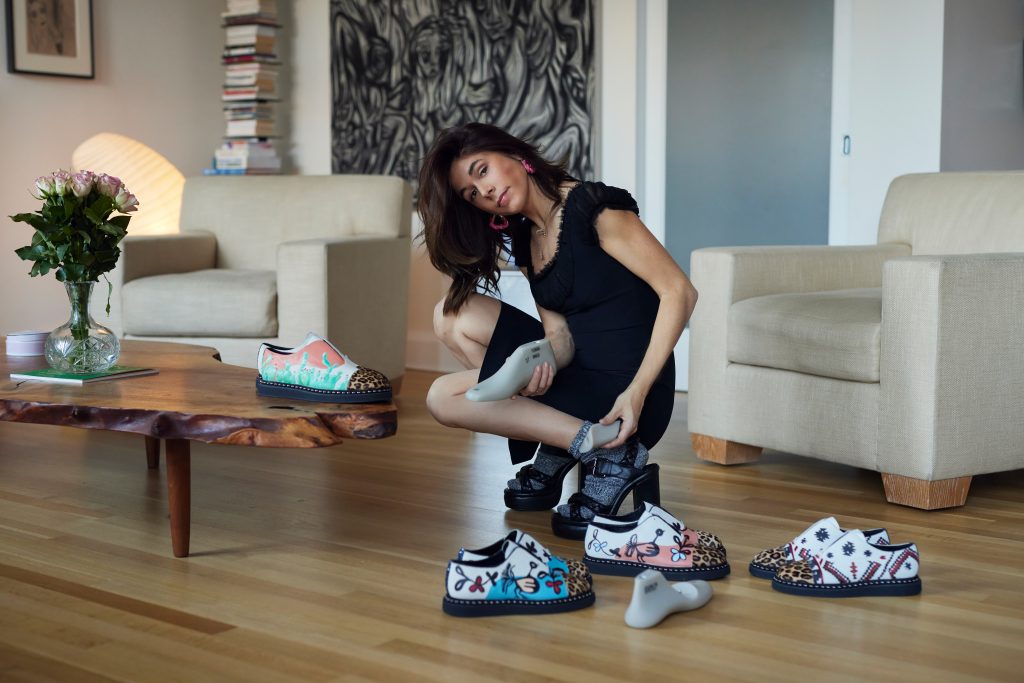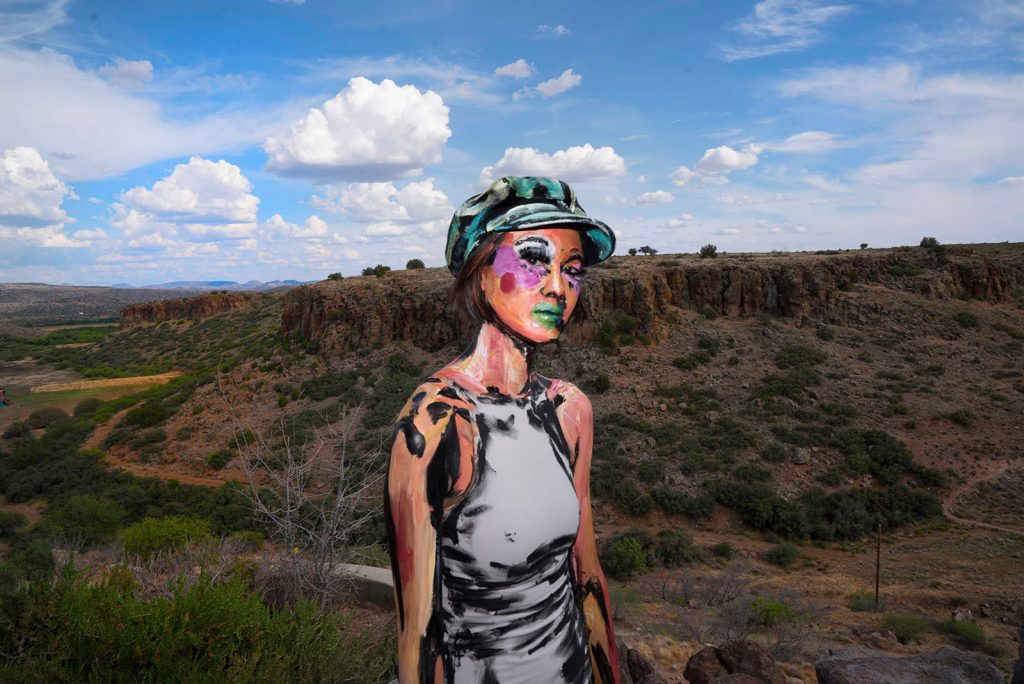Interview: Christian Louboutin
We visit the celebrated designer’s Paris studio and get a sneak peek at his new ShoePeaks creation

Being in Christian Louboutin’s Paris studio is overwhelming. We meet Monsieur Christian Louboutin in his museum-like studio (like a tiny Louvre, which, coincidently, is just a few blocks away) for an exclusive preview of ShoePeaks, his latest (and possibly most imaginative) design. It’s a clutch, but it’s much more than that, since it’s a real sculpture and at the same time something organic and surreal, apparently derived from an elegant genetic manipulation, unusual yet sexy. However, the French-born designer’s enthusiasm for design in general—from architecture to shoes—is evident as our conversation flows from process, inspiration, a love of curves, and what success in the fashion industry means to him.
Sitting at his desk, Louboutin begins by telling us about ShoePeaks’ inception. “It was born quite a long time ago,” he tells us. “I started to work on morphing shoes together because I did an exhibition with David Lynch, where I had to see the fetishism. I see many people have a hard time packing shoes, because they put one shoe in and then they put the other shoe in, and it just doesn’t work. I always say that it’s very easy if you just put one on the top, one on the bottom and you marry the shoes. So it’s actually a natural thing for shoes to melt one to the other.”

Louboutin’s father was a carpenter—probably a reason he developed a passion for the most concrete side of shoemaking, starting from lasts (aka wooden shoe molds). “I’ve always loved the shape of lasts—the concave and convex, the yin and the yang. So going around that, it really made sense to have two shoes combined. The first shapes were made with very high heels from the fetish project, but they were big. This is not even a size 36, it’s completely reduced. It’s really been a study on morphing. When it was bigger it reminded me of a pillow, or small bones from a vertebral column. I also thought that it looked like giant ‘osselets’ [a traditional French game, similar to knucklebones]. So that’s how it was born. Actually it’s funny because it was very unconscious.”

The final result is a very lightweight aluminum clutch in two finishes, black in lacquered metal and gold in polished metal, both enclosed between two iconic red soles. The inside recalls the shoes too, with a soft lambskin leather lining. The removable chain can be worn both over the shoulder and across the body. The process of design and development was complex and slow: “It took almost three years from the beginning, which is fine. I’m working in a place where everything’s pretty useless. I always think, ‘It’s ready when it’s ready. If it’s not ready, it’s not ready.’ It took time, but it’s nice,” he says.
Design today also involves a lot of digital steps, but Louboutin began in a very traditional, hands-on place. “I really made a wooden last and then a mirrored copy of the last. Then I covered the rest of it. It went digital in order to have the shape and correct angles, but it was really born as a real object and shape. Digital is very interesting and very important, definitely very useful for architecture, where you can see plans much better. But I think that in the universe of shapes people forget that digital starts all the same, by someone putting data in a software. I can see that because I draw,” he says.

The world of Louboutin is made of dichotomies: soft pinks and sharp studs, sexy lines and sharp edges (his punk leanings are clearly still part of him). He says that the way to marry all his design desires is through his enduring passion for curves. “The relationship comes from something thing that I always loved, which is architecture. And in architecture I love curves, but also other elements which are a great marriage of opposites. I have a passion for curves, but I still like the universe of forms and shapes in general. A perfect example is obelisks and pyramids, but I favor cones.”
If it’s successful, there’s been a purpose
Considering how celebrated and respected he is in the industry, Louboutin’s thoughts on originality are refreshingly candid. “I always laugh when people say, ‘You really did something which is completely different. Do you know if it’s going to work?’ I have no idea, but when it works, that’s great. If it doesn’t work, I will be proud of everything I’ve been doing,” he tells us. And as for his consistent success and appreciation, he says, “Success is another story. Recognition is an added value for sure, but the reality is I don’t understand people who are working for a long time on something which is boring. If it’s successful, there’s been a purpose. But if it’s unsuccessful and you’ve been working on something which has no substance, I would have the feeling that I wasted a lot of time.”

When discussing production the designer shows a mixture of discretion and enthusiasm, it’s as though he’s talking about something very private—almost intimate. “Every month I go to the factories at least one full week. It’s intense, but it’s very, very nice. I sleep in the factory, so [I’m there] from the morning until the evening because my brain stays with my work. I sleep very well, but I don’t really stop the working process. Staying a full week in the factory I can literally do what people are doing in a month. I built an apartment on the roof and my office is just above my apartment, so I end up working in the evening. Correcting the lasts, the shoes, the prototypes happens during the day and in the evening I put things together, do marriages, look at the overall collection, the things where I don’t need technicians.”
I think that this is almost a duty; if you make a new object it should be beautiful because there is so much crap
A true artist and designer, Louboutin wants to genuinely add value, rather than add to the noise. Quite simply, he wants to make beautiful things for people to enjoy. “I think that this is almost a duty; if you make a new object it should be beautiful because there is so much crap. I’m not talking of fashion, I’m talking in general. It’s important for the environment that if you add things, they should be beautiful. Otherwise, just stay on the side,” he says.
For all the thinking, designing, molding, pondering shapes and sleeping in factories, it’d be easy for one to think Monsieur Louboutin is somewhat obsessed. “Passion, not obsession!” he tells us, “I mean, I have obsession, but I don’t think it’s obsessive. I always hear you should never sleep in your office. Well, I slept for years in my office and I never had a problem with that. If it comes from your passion, you work so much but it’s fine.”
Tomorrow, 3 November, ShoePeaks will be available online.
Final image courtesy of Louboutin, all others by Paolo Ferrarini












